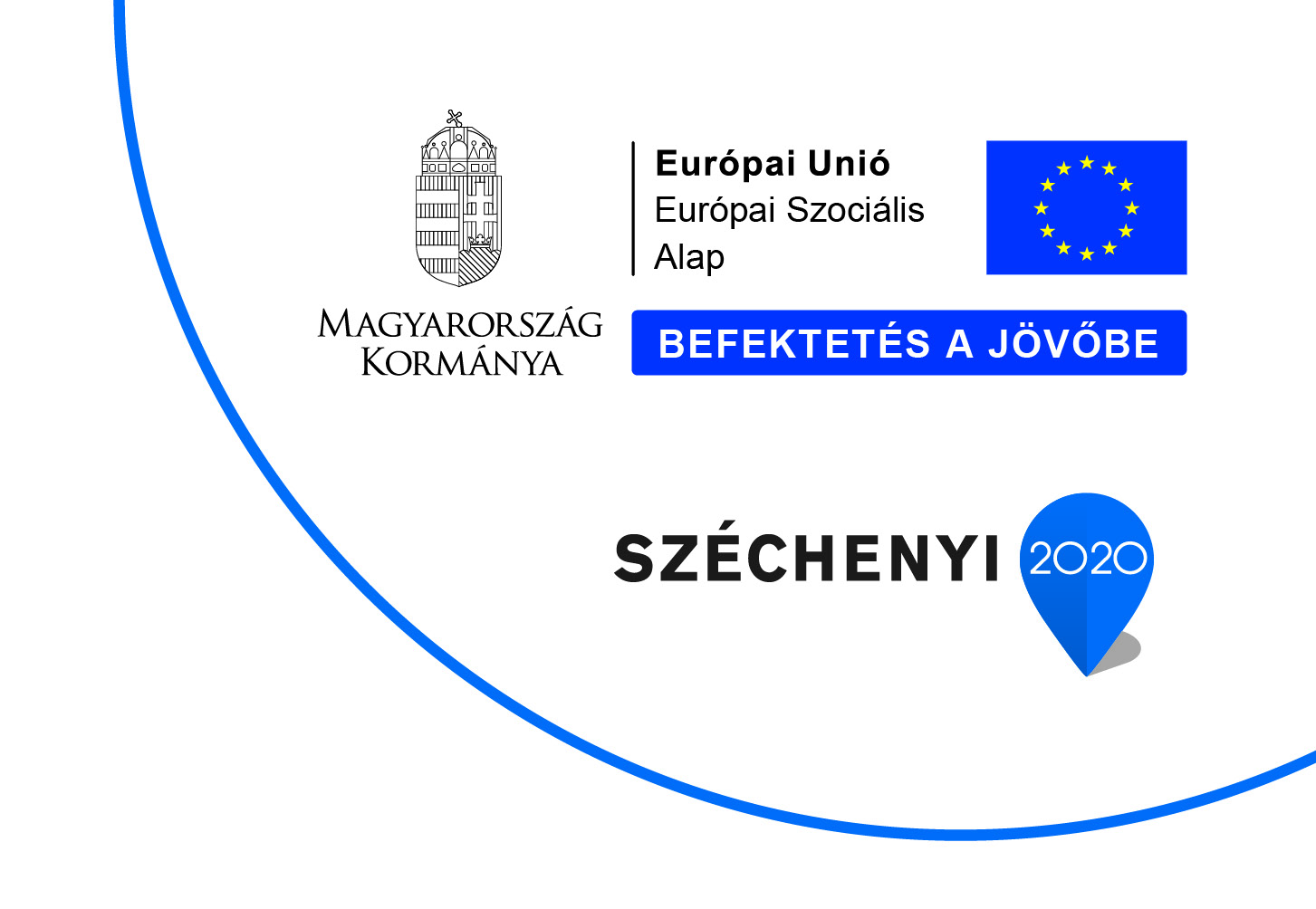Jégtörők,játékok ifjúsági munkásoknak – angol nyelven
2020-1-HU01-ESC11-077780 Önkéntesség Szekszárdon
Object Stories
Collect together a number of objects and place in a canvas or dark coloured plastic bag. The objects can include everyday items i.e. a pencil, key-ring, mobile phone, but also include some more unusual ones i.e. a fossil, holiday photograph, wig!
Pass the bag around the group and invite each young person to dip their hand into the bag (without looking) and pull out one of the objects. The leader begins a story which includes his object. After
20 seconds, the next person takes up the story and adds another 20 seconds, incorporating the object they are holding. And so on, until everyone has made a contribution to your epic literary tale. Let imaginations run wild!
Source: https://insight.typepad.co.uk/insight/2009/02/10-more-icebreakers.html
Name that Person
Divide the group into two teams. Have everyone write down five things that few people know about them, in order of difficulty. Gather the cards, keeping them separated by teams. The other team gets to guess who it is, receiving five points if the first guess is right and one point less for each clue after that. The team with the most points at the end wins. This game can be a great youth ice breaker in talking about how no one really knows a person truly besides themselves and God.
Source: https://funattic.com/41-youth-group-icebreakers/
Provide the group with paper, paints, markers, and other craft supplies. Have each person design a flag that represents them. At the end, have everyone share their flags with the group. Each person should take turns discussing why they chose the symbols on their flags. This is one of several youth group icebreakers on this list that’s better for younger aged groups.
Source: https://funattic.com/41-youth-group-icebreakers/
Word Link
This is a word association game. Ask the group to sit in a circle. The first person starts with any word they wish i.e. red. The next person repeats the first word and adds another word which links to the first i.e. tomato. The next person repeats the previous word and add another word link i.e. soup, and so on. To keep this moving, only allow five seconds for each word link. See how many linking words your group can get.
Source: https://insight.typepad.co.uk/insight/2009/02/10-more-icebreakers.html
Quick Change Artist
Bring two people up to the front. Each player is to observe his or her partner’s appearance. Then, the players turn around back-to-back and make three changes (mess up hair, take off a shoe, untuck shirt, take arm out of sleeve). When they face each other again, each partner must identify the changes made by the opponent. This game can be repeated several times by changing partners and increasing the number of changes made until a winner is declared.
Source: https://www.signupgenius.com/church/youth-group-icebreakers.cfm
This classic game is a favorite for all students but it can get boring quite quickly. This game is best used for 5 minutes at the start to warm the class up or 5 minutes at the end if you’ve got some time left over. It works no matter how many students are in the class.
Why use it? Warming up / winding down class
Who it’s best for: Young learners
How to play:
In case you’ve never played, here’s a quick rundown.
• Think of a word and write the number of letters on the board using dashes to show many letters there are.
• Ask students to suggest a letter. If it appears in the word, write it in all of the correct spaces. If the letter does not appear in the word, write it off to the side and begin drawing the image of a hanging man.
• Continue until the students guess the word correctly (they win) or you complete the diagram
(you win).
Source: https://www.gooverseas.com/blog/10-best-games-esl-teachers#paragraph-item-41699
This is an excellent game for young learners Whether you’re waking them up on a Monday morning or sending them home on a Friday afternoon, this one is bound to get them excited and wanting more. The only danger I have found with this game is that students never want to stop playing it.
• Why use it? Listening comprehension; Vocabulary; Warming up/winding down class
• Who it’s best for: Young learners
How to Play:
• Stand in front of the class (you are Simon for the duration of this game).
• Do an action and say Simon Says [action]. The students must copy what you do.
• Repeat this process choosing different actions – you can be as silly as you like and the sillier you are the more the children will love you for it.
• Then do an action but this time say only the action and omit ‘Simon Says’. Whoever does the
action this time is out and must sit down.
• The winner is the last student standing.
• To make it harder, speed up the actions. Reward children for good behavior by allowing them to play the part of Simon.
Source: https://www.gooverseas.com/blog/10-best-games-esl-teachers#paragraph-item-41699
This is another game that works well with any age group; children love it because they can get creative in the classroom, teenagers love it because it doesn’t feel like they’re learning, and adults love it because it’s a break from the monotony of learning a new language – even though they’ll be learning as they play.
Pictionary can help students practice their vocabulary and it tests to see if they’re remembering the words you’ve been teaching.
• Why use it? Vocabulary
• Who it’s best for: All ages; best with young learners
How to play:
• Before the class starts, prepare a bunch of words and put them in a bag.
• Split the class into teams of 2 and draw a line down the middle of the board.
• Give one team member from each team a pen and ask them to choose a word from the bag.
• Tell the students to draw the word as a picture on the board and encourage their team to guess the word.
• The first team to shout the correct answer gets a point.
• The student who has completed drawing should then nominate someone else to draw for their team.
• Repeat this until all the words are gone – make sure you have enough words that each student gets to draw at least once!
Source:https://www.gooverseas.com/blog/10-best-games-esl-teachers#paragraph-item-41699
Cost: Free
Prep time: 15 minutes
Messy?: No
Supplies: flashcards, marker
Get one flashcard for every kid and leader you expect to have at your youth group (plus some extras, just in case). On each flashcard write the name of a celebrity or fictional character. The more well-known they are, the better. They could be actors, musicians, athletes, public figures, superheros, or characters from books or movies. Be sure to pick people your students will know and appreciate, not just the famous people your leaders grew up with!
Give every kid one of the cards and don’t let them see the name on it. Have them hold or tape the card on their forehead with the name facing out, find another person, and ask one yes or no question about the name on their card. Be sure to give kids plenty of example questions to use, such as:
• “Am I someone who’s alive right now?”
• “Am I a real person?”
• “Have I been in a movie?”
• “Do I make music?”
• “Do I have a beard?”
Make sure kids only ask each person one question so that they have to move around and talk to multiple people. Once they feel ready, they can try to guess who they are. When kids guess correctly, they can still help give other people clues. You can end the game after a certain amount of time so nobody feels singled out if they couldn’t figure out who they were, or you can give bigger hints toward the end.
Source: https://pushpay.com/blog/youth-group-activities/
5) Piranha Ball
In this game, the ball is a piranha. Make sure you use a ball that is buoyant. Gather your players and have them form a circle in the pool. Once you have made a circle, have everyone hold hands and put the piranha in the middle of the circle. Once everyone is ready, get moving! The goal is to move, splash and dodge the piranha. If you get touched by the ball, you are out.
Source: https://thesource4ym.com/piranha-ball/
6) Texas Shoot Out
For this game, you need one person to volunteer to be the “judge”. Make sure that this person knows that they will not be playing, but they serve as a referee for the game. Once you have a judge, have the rest of the group stand in a circle facing outward. The judge will walk around the outside of the circle, and randomly pick a person. When the judge points at that person and says “draw”, the players to the left and right of the person who was picked will have a shootout. At that moment the two people on either side of him/her make their hand into a “gun” and say, “BANG!”. Whoever says “bang” first continues to stand while the person who said it last “dies” and sits down. If it is hard to tell who said “bang” first, the judge has final say. The game continues until there are only two people left.
When there are two players left, they will stand back-to-back. When the judge says “go”, the two players walk forward 10 paces. At any time while they are walking the judge can yell “DRAW!”. When the players hear “DRAW”, they must turn around and “shoot” the other person. The winner then becomes the new judge.
NOTE: There are plenty of times where the two “shooters” will be really close. The judge gets the ultimate say and decides who shot first. If it is really to close to call, have them do a duel as the final two players do.
Source: https://thesource4ym.com/texas-shoot-out/
The idea of this game is simple – split your group into teams of 3 or 4, and give each team a “Building Kit” (explained below) and a bowl of water. Each group has 30 minutes to build a bridge to span across a bowl of water.
At the end of 30 minutes, each group demonstrates their bridge. You then test it for strength by adding pebbles one at a time, until the bridge collapses. The team with the strongest bridge wins!
Building Kit
The Building Kit is a shoebox with a variety of building materials. For example:
• Ice cream sticks
• Putty / Bluetack / Elmer’s Tack
• Paper clips
• String
• Glue
• etc
Make sure each group has the same amount of materials, just to keep things fair.
Source: https://www.jubed.com/view/Build-a-bridge/?s=11
This game is a short, fun, physical game to get people moving and laughing. It ideally works best with group sizes of around 20 people.
To begin this game, have everyone stand up and secretly identify one person in the group to be their ‘best friend’, and another different person to be their ‘worst enemy’.
When you say ‘go’, each person should position themselves between their best friend and worst enemy – protecting their friend. People shouldn’t obviously reveal whom is their best friend or worst enemy.
Expect people to move around and let them go for around 2-3 minutes.
Once that’s done, you can include a different variation where you position your best friend between you and your enemy.
Source: https://www.jubed.com/view/Best-Friends-and-Worst-Enemies/?s=11
9) Body speller
Form two or more teams. Then have team members take turns standing in front of their teams and spelling out words or phrases for the team to guess. The speller is not allowed to speak or mouth the words. You’ll assign various methods that kids can use to spell the words. For example, the spellers may only be able to use their index finger, or even their feet. A point is awarded to the first team to guess the word or phrase.
Source: https://www.jubed.com/view/Body-speller/?s=11
Ask everyone to find a partner so everyone is paired up in groups of two.Have them decide who is the birdie and who is the perch. All the birdies stand in a circle and all the perches stand in a circle surrounding the birdies. Have some music ready. When the music starts, the birdies walk clockwise around the circle and the perches walk counter-clockwise. When the music stops, the birdies must find their perches and sit on them (the perch kneels on one knee, making a perch out of the other leg). If you don’t have music, you can just have a leader yell “Birdie on a Perch!”
The last couple to pair up is eliminated and the object is to be the last couple left.
It’s more fun if you make them move quickly in their circles so that they are at least jogging.
Source: https://www.jubed.com/view/Birdie-on-a-Perch/?s=11
11) Blanket Volleyball
This game is just like normal volleyball, but each team is given a blanket.
The team should stand around the edge of the blanket, stretching it out so it is tight. The ‘serving’ team should start by placing the ball on the blanket, loosening then brining it tight so it ‘throws’ the ball over the net. The other team then use their blanket to catch the ball then throw it back.
It’s an interesting and fun variation to the more traditional style of volleyball.
Source: https://www.jubed.com/view/Blanket-Volleyball/?s=11
Everyone sits on chairs in a circle. Choose someone to stand in the middle. This person then points at someone and says “Bibbidy Bop Bop”. The person they are pointing to must say “Bop” before they finish, otherwise they then become the person in the middle.
If the person in the middle says anything other than “Bibbidy Bop Bop” and the person they are pointing to says “Bop”, they are out and become the person in the middle.
Source: https://www.jubed.com/view/Bibbidy-Bop-Bop/?s=11
13) Birthday Bash
Setup a circle a set of chairs with one less chair then the amount of people present. Make one person “it”.
Go around the circle and have each person state which month he or she is born in. The “it” person calls a month and everyone with that month must switch seats. The “it” can also call multiple months and if the “it” would like everyone to move seats the person calls out “Birthday Bash” and then everyone is required to switch seats. The person left out is the new “it”.
Source: https://www.jubed.com/view/Birthday-Bash/?s=11
Split your group up into smaller groups, and give each group a banana, cutting board and plastic knife. Each group should cut the banana into 4 or 5 equal sized pieces. (don’t tell them what the next steps are at this point).
Then hand out banana surgery kits – pins, string, sticky tape, tooth picks, rubber bands etc. The goal is for each group to reassemble the banana.
The lesson from this game is that some things (relationships, trust, reputation, bananas!) are easy to break but more difficult to put back together.
Source: https://www.jubed.com/view/Banana-Surgery/?s=11
15) Balloon Smash
To prepare for this game, you need two balloons for each person in your group (plus some spares for those that might break whilst you’re inflating them). Preferably the balloons should be two different colours (to represent two different teams). Tie two-foot-long strings to the ends of each balloon.
Give each person two balloons (of the same color) and have them tie one to each leg. Separate the teams on either side of the room/area.
When you say ‘go’, the kids must try to pop the balloons from the other team by stepping on them. When both your balloons have popped, you’re out and must sit down.
The team with the last balloon remaining wins.













